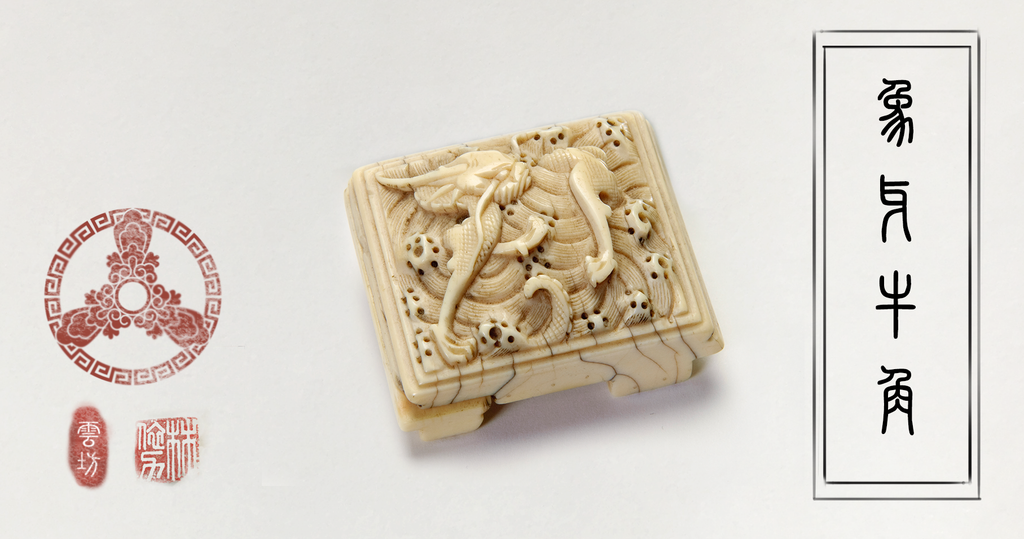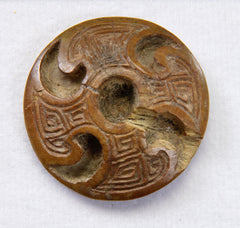8% off orders over $100, 15% off orders over $150, 20% off orders over $300.
Menu
-
- Specials
-
Types
-
Symbols
- Auspicious Cloud | Heaven
- Lotus | Purity & Elevation
- Phoenix | Rebirth and Fidelity
- The Nine | Eternity and Completeness
- Bamboo | Strength and Resilience
- Ruyi | Wish Fulfillment
- Moon | Mystery & Elegance
- Herbal Locket | Hidden Protection
- Tassel | Elegant Charm
- Butterfly and Flower | Love
- Plum Blossom | Endurance and Resilience
- Chinese Knot | Harmony, Tradition, Legacy
- Pumpkin | Prosperity & Abundance
- Pipa | Celestial Music
- Hulu Gourd | Protection and Prosperity
- Fish | Prosperity
-
Collections
- Atlantis
- Revive Your Inner Kingdom
- Auspicious Origin
- Auspicious Flower
- Udumbara Flower
- Return to Origin
- Celestial Cloud
- Elf Forest
- Gold Lotus
- Serene Lotus
- Pearl Elegance
- Radiance
- Metropolis Hermit
- The Nine
- Moon Goddess
- Tassel Elegance
- Chic Velvet Choker
- The Cloud
- Lotus Leaf
- Realm of Peace
- Four Season
-
Craftsmanship
-
Gemstones
- Pearl | Purity and Wisdom
- Jade | Stone of Heaven
- Turquoise | Protection and Healing
- Tridacna | Realm of Peace
- Lapis | Truth and Enlightenment
- Rose Quartz|Love, Healing, Compassion
- Amethyst | Clarity and Tranquility
- Amber | Vitality and Protection
- Carnelian | Courage and Vitality
- Coral | Protection and Prosperity
- Tourmaline | Energy and Balance
- Crystal | Healing and Clarity
-
Birthstone
-
Style
-
Price
-
- Jewelry Set
- Necklaces
- Earrings
- Bracelets
- Hair Jewelry
- Glasses Chains
- Rings
- Anklets
- Ornaments
- Login
-
English

8% off orders over $100, 15% off orders over $150, 20% off orders over $300.
Ivory, Bone, and Horn in Chinese Jewelry
February 09, 2016 3 min read 1 Comment

Organic materials left over from hunts and scavenging were one of the earliest materials used for adornment in prehistoric times. Along the coasts, people pierced and strung seashells. In Mongolia and Siberia, fossilized ostrich and dinosaur eggshells were also drilled into beads in 10,000 BC. As early as 16,000 BC, Chinese societies were using bone, teeth, and shell beads as adornment.
Ivory
In general, the Han Chinese eschewed common bone after the neolithic times in favor of ivory, either from fossilized mammoth tusks or from elephants.
Today we know the African elephant and the Asian elephant of Southeast Asia. But in 5,000 BC, these lumbering creatures also roamed northern China, as evidenced by ivory ornaments and weapons found in Shang (1600 – 1050 BC) and Zhou (1046 – 256 BC) tombs, and the fact that the character for “elephant” has been found carved onto oracle bones during this time.

In a Shang Dynasty tomb unearthed in 1976, over 500 of the 1928 items were of ivory or bone. The vast majority of those were ornaments and artworks.
In the early Zhou Dynasty, ivory gained a place among the eight industries recognized by the Zhou elite, (beads, ivory, jade, stone, metals, leather, and feathers) but bone did not. One reason is that tusks became a tribute from different kingdoms to the Zhou emperor. At that time, ivory mainly served as decorations on war chariots and furniture for noblemen, or as small ornaments.

Ivory continued to be a luxury trade and tribute good from the Southeast Asian regions well into the golden age of Chinese civilization. In the Tang court, officials below the fifth rank were allowed to hold official ivory tablets.
In the Yuan dynasty (1279 – 1368), the royal court even had a department regulating ivory, though very few artifacts dating from the Yuan or the Song dynasties have been recorded.
Ivory regained popularity in the Ming dynasty as maritime expeditions to the coasts of Africa and Southeast Asia brought back boatloads of the material. Ivory crafts reached such a level that in the Qing dynasty (1644 – 1912), artisans in the southern port cities fashioned tricked-out, sphere-within-a-sphere puzzle balls and fine-as-filigree jewelry boxes as a way to show off their technical skills.
Emperor Kangxi frowned upon this type of overwrought carving, instead requiring his master craftsmen to strike a balance between the rough-hewn northern style and the ostentatious southern style.
Bone
In contrast to the Chinese, Tibetans and Mongolians used bone extensively in jewelry, since their herd animals formed the basis of their livelihoods, and no part of the animal was wasted. Tibetans especially had no qualms about using bone, including human bone, in jewelry and religious objects due to the Tibetan Buddhist belief that the body is merely a vessel for the soul during life, and insignificant after death. See this apron strung together from human bones at the Asian Art Museum in San Francisco.
Horn
Horn, being of the same material as our fingernails and hair, is pliable when heated, and was used like a proto-plastic in ancient Asia. It was horn, formed into narrow strips that made the compound recurve bow so powerful, and the Mongolian army so disastrously effective.
In China, with the exception of finely carved rhinoceros horns carved as decorative vessels, horn served mostly utilitarian functions, particularly as archers’ rings and hair combs. Horn is excellent as a comb because it neither snags the hair nor generates static electricity. Massaging the scalp with such combs stimulates a myriad of acupuncture points that connect to all parts of the body.
According to one Chinese legend, a rhino's horn, when burned, becomes a portal into another dimension. This derives from the fact that the word for "rhinoceros" also means "acumen" and evokes the idea of extra-sensory perception.
One story tells of a man who heard a rumor that some mysterious beings lived in a lake near his village. In the depth of night, he lit a rhino horn and held it above the water's surface. Through the flame and smoke he saw tiny people dressed in red going about their business. That night one of the denizens of this underwater world came to the man in his dreams and chastised him for disturbing his society's secrecy.
This article is part of the Divine Land Gemstone Compendium, a weekly series by Yun Boutique exploring the gemstones of ancient China and their significance to Chinese culture. See the full series here. Subscribe to the email newsletter to receive future installments.
Produced and edited by Christine Lin.
1 Response
Leave a comment
Subscribe
Sign up to get the latest on sales, new releases and more …


Elizabeth Sheridan
July 27, 2024
I have what looks like a dark red Bakelite necklace with beads graduated from 1 inch oval to small half inch beads. The clasp is bone or ivory carved into a split 1 inch ball which screws together. It is completely covered in a dark spiderweb craze and the carving is similar to your illustration??is this Chinese?